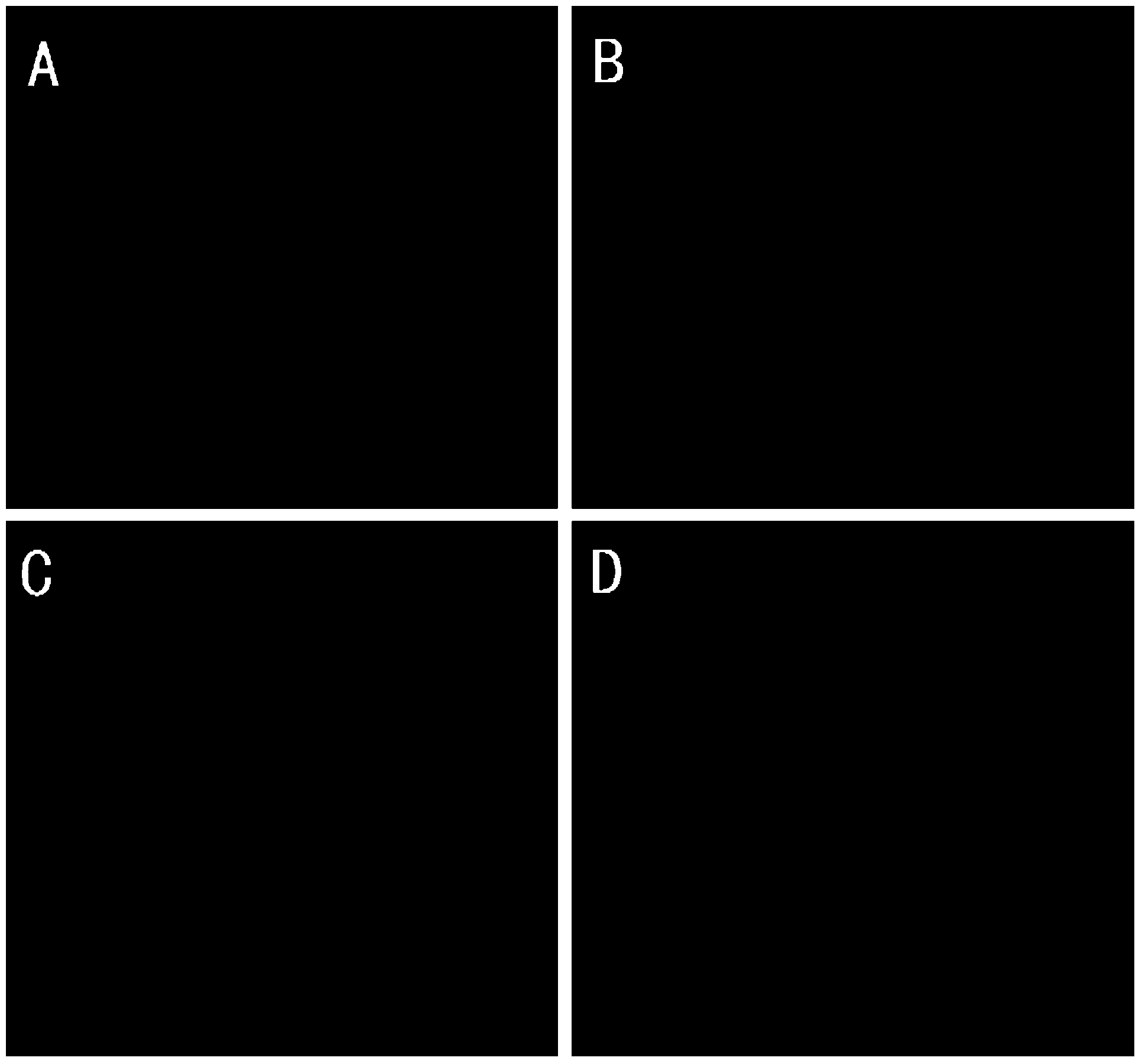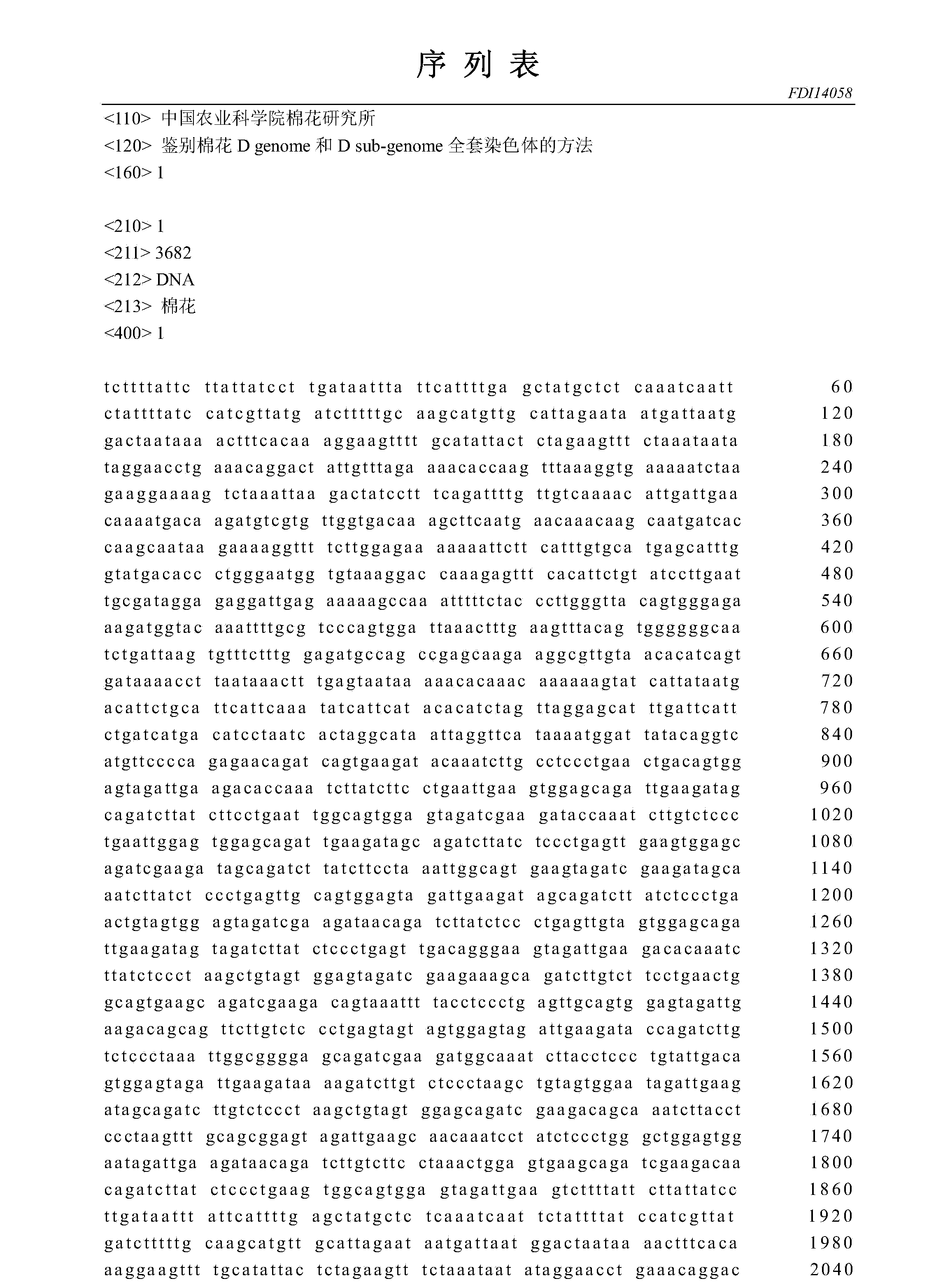Method for identifying cotton D genome and D sub-genome complete chromosome
A chromosome and cotton technology, applied in the field of molecular cytogenetics, can solve the problems of little difference between chromosomes, different degrees of chromosome shortening, and difficulty in distinguishing centromeres.
Inactive Publication Date: 2015-01-28
INST OF COTTON RES CHINESE ACAD OF AGRI SCI
View PDF2 Cites 3 Cited by
- Summary
- Abstract
- Description
- Claims
- Application Information
AI Technical Summary
Problems solved by technology
However, in actual experiments, different types of reagents, different concentrations and differences in treatment time often lead to different degrees of shortening of chromosomes. In addition, the size of cotton chromosomes is small, the difference between chromosomes is not large, and the centromere is not easy. Factors such as discrimination make it difficult to obtain ideal and reliable results by relying on chromosome morphological characteristics to identify chromosomes
Method used
the structure of the environmentally friendly knitted fabric provided by the present invention; figure 2 Flow chart of the yarn wrapping machine for environmentally friendly knitted fabrics and storage devices; image 3 Is the parameter map of the yarn covering machine
View moreImage
Smart Image Click on the blue labels to locate them in the text.
Smart ImageViewing Examples
Examples
Experimental program
Comparison scheme
Effect test
Embodiment 1
[0088] Example 1 uses the 2kb sequence as a probe to hybridize upland cotton (AD) respectively 1 , Asian Cotton A 2 , Raymond cotton D 5 metaphase chromosome
[0089] 1 Materials and methods
[0090] 1.1 Experimental materials
the structure of the environmentally friendly knitted fabric provided by the present invention; figure 2 Flow chart of the yarn wrapping machine for environmentally friendly knitted fabrics and storage devices; image 3 Is the parameter map of the yarn covering machine
Login to View More PUM
 Login to View More
Login to View More Abstract
The invention belongs to the field of molecular cytogenetics and particularly relates to a method for identifying D genome and D sub-genome complete chromosome. The method comprises the following step: by taking a sequence as shown in SEQ ID NO.1 as a probe to perform fluorescence in-situ hybridization on the DNA (deoxyribonucleic acid) of a cotton genome. The sequence is taken as the probe, and chromosomes in the mitosis metaphase of the upland cotton, the asiatic cotton and the Raymond's cotton are taken as target DNA to perform fluorescence in-situ hybridization, and the results indicate that obvious hybrid signals are shown on the D subgenome chromosome of the upland cotton and the D genome chromosome of the Raymond's cotton, the signals are distributed on all chromosomes, and no obvious signals are shown in the A subgenome chromosome of the upland cotton and the A genome chromosome of the asiatic cotton. The sequence adopted by the method disclosed by the invention can be used for quickly identifying the cotton D genome and D sub-genome complete chromosome by virtue of a FISH (fluorescence in situ hybridization) method.
Description
technical field [0001] The invention belongs to the field of molecular cytogenetics, in particular to a method for identifying a complete set of chromosomes of cotton D genome and D sub-genome. Background technique [0002] Cotton is divided into 52 cotton species, including A, B, C, D, E, F, G and K8 chromosome groups. Today, the main cultivated species of cotton in the world are tetraploid cotton species upland cotton (AD) and sea island cotton (AD), which account for about 95% and 5% of the cultivated area respectively. At present, the genome sequencing of Group A cotton species Cotton chinensis and Group D cotton species Raymond has been completed (Wang et al., 2013; Li et al., 2014). The comparative study of cotton A and D genomes will be of great help to the evolution research of tetraploid cotton and cotton breeding. Fluorescence in situ hybridization technology was born in the 1960s, and its appearance opened a new era of cell and molecular biology. Subsequently, ...
Claims
the structure of the environmentally friendly knitted fabric provided by the present invention; figure 2 Flow chart of the yarn wrapping machine for environmentally friendly knitted fabrics and storage devices; image 3 Is the parameter map of the yarn covering machine
Login to View More Application Information
Patent Timeline
 Login to View More
Login to View More IPC IPC(8): C12Q1/68
CPCC12Q1/6841C12Q2543/10C12Q2563/107
Inventor 崔兴雷刘方刘玉玲孟菲王春英周忠丽蔡小彦王星星王玉红彭仁海王坤波
Owner INST OF COTTON RES CHINESE ACAD OF AGRI SCI
Features
- R&D
- Intellectual Property
- Life Sciences
- Materials
- Tech Scout
Why Patsnap Eureka
- Unparalleled Data Quality
- Higher Quality Content
- 60% Fewer Hallucinations
Social media
Patsnap Eureka Blog
Learn More Browse by: Latest US Patents, China's latest patents, Technical Efficacy Thesaurus, Application Domain, Technology Topic, Popular Technical Reports.
© 2025 PatSnap. All rights reserved.Legal|Privacy policy|Modern Slavery Act Transparency Statement|Sitemap|About US| Contact US: help@patsnap.com



